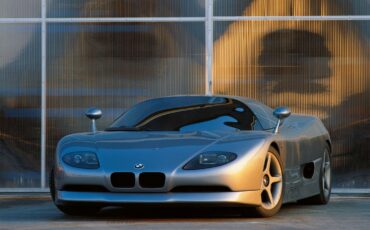
The 90s was not exactly a golden age for Bugatti. The brand rolled out just one production car under Romano Artioli, who took over in 1987. But hold up—Bugatti wasn’t short on wild ideas. They dreamed up some seriously awesome concept cars, even if they never hit the road. It’s a shame because there were at least four models that were so cool they made you wonder: why didn’t Bugatti build these? Let’s start with their actual production car, the EB 110.
Bugatti EB 110
Introduction: September 15, 1991
Specifications: 3.5-liter V12 (553 bhp or 603 bhp), all-wheel-drive, a manual six-speed transmission, top speed of 351 km/h.
Flashback: September 15, 1991. Picture the Champs-Élysées in Paris. Down this iconic avenue cruises the Bugatti EB 110, a rolling tribute to Ettore Bugatti’s 110th birthday. A supercar for the ages, the EB 110 had sharp, angular lines, scissor doors like a Lamborghini, and enough horsepower to drop jaws.
Like the Bugatti models of yesteryears, this machine was serious. Its 3.5-liter V12 engine had not one, not two, but four turbochargers, plus intercoolers. Built around a carbon monocoque frame, it delivered 560 hp to all four wheels using twin differentials. Compared to Lamborghini’s Diablo—unveiled earlier—it was ahead of its time. The Diablo offered 492 hp and only gained all-wheel drive in 1993 with the VT model. The EB 110 was a beast right out of the gate.

Even the engine design was cutting-edge. Bugatti followed Formula 1 guidelines of the era to craft a 60-valve, 3.5-liter V12 with five valves per cylinder. The car’s price tag reflected its ambition: 450 million lira for the base version, and 550 million lira for the Super Sport variant. Over the years, values for the EB 110 skyrocketed, jumping from €280,000 in 2011 to nearly $2.15 million at a Sotheby’s auction.
Bugatti developed only 135 EB 110s—95 standard models and 39 Super Sports. Among these, Michael Schumacher’s yellow EB 110 SS is particularly famous. Today, the EB110’s rarity makes it a collector’s ambition.
Bugatti ID 90 Concept
Introduction: 1990 Turin Motor Show
Specifications: Mid-mounted 3.5-liter V12, four turbos, AWD, top speed of 174 mph (280 kph).
It was Giugiaro’s first Bugatti design, borrowing elements from the eventual EB 110. Compared to the EB 110, the ID 90 had more refined styling. Introduced a year before its production sibling, the concept featured a massive glass dome with vents for cooling the V12. Its retro wheels, inspired by the 1926 Royale, added flair.
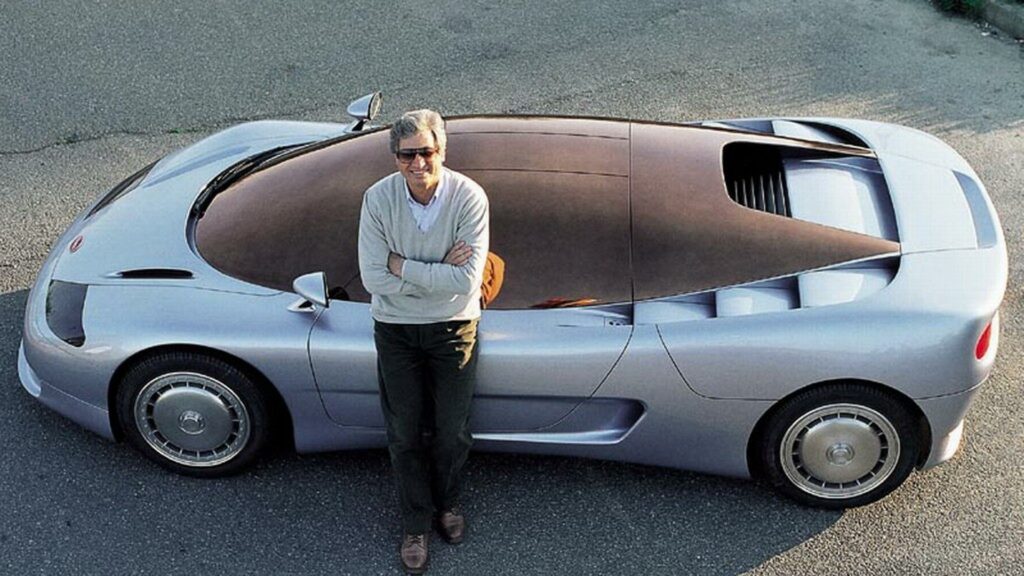
It’s fun to imagine how the EB 110 might’ve fared with this design. Sleeker and arguably prettier, the ID 90 feels like a missed opportunity.
Bugatti EB 112 Concept
Debut: 1993 Geneva Motor Show
Specifcations: 6.0-liter V12 (455 hp), AWD, carbon fiber chassis.
The EB 112 was Bugatti’s take on a four-door sedan, long before the Galibier 16C appeared in 2009. Giugiaro went retro again, drawing inspiration from Bugatti’s 1920s and 30s models, like the Atlantic. The styling? Let’s call it polarizing. But for its time, it was bold.
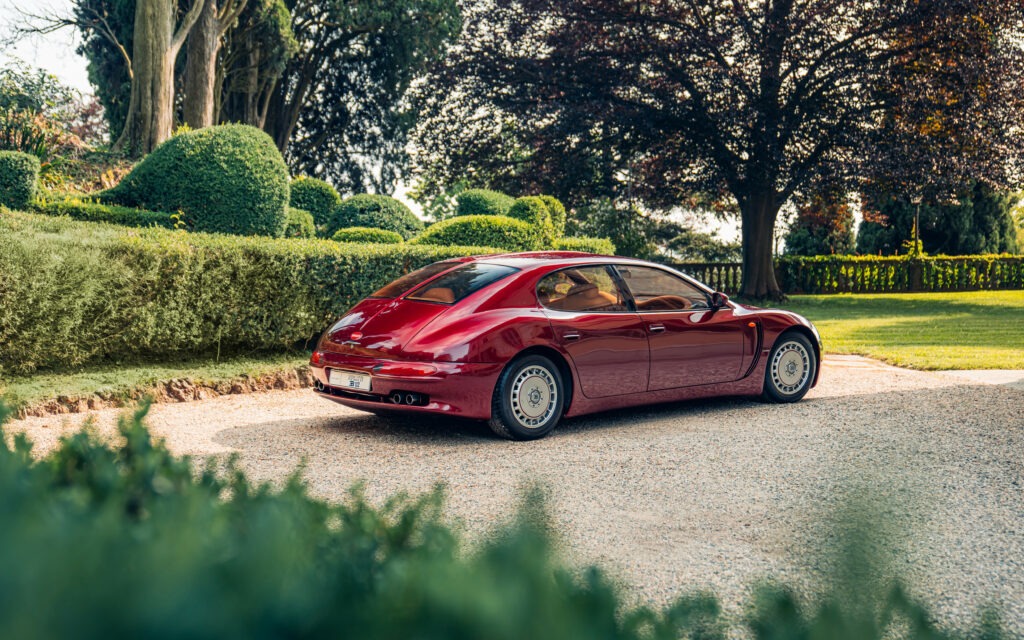
Inside, luxury reigned: leather, walnut trim, and a few modern touches like a dash-mounted video screen. Its V12 engine sat near the front axle, improving handling. Romano Artioli, Bugatti’s then-president, famously said it handled “like a go-kart.”
Sadly, Bugatti’s financial troubles killed the EB 112 before it could reach production. Only one was fully built before bankruptcy. Two incomplete chassis were later finished by Monaco Racing Team. Of the three prototypes, one is red, one black, and one is dark blue. Today, these are among the rarest Bugattis ever.
Bugatti EB 118 Concept
Introduction: 1998 Paris Motor Show
Specifications: W18 engine (yes, 18 cylinders!), 6.3 liters, 555 hp, AWD, 199 mph top speed.
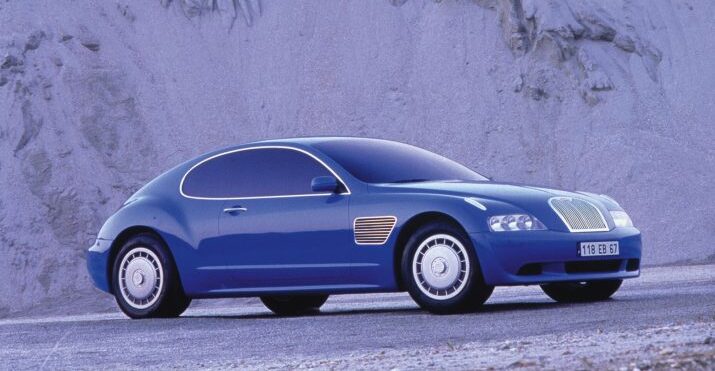
The EB 118 made history with its W18 engine, the first of its kind in a passenger car. This beast had three rows of six-cylinder banks arranged in a “W” under the hood. Italdesign Giugiaro styled the coupe, giving it an art deco interior with minimal buttons and knobs.
Bugatti EB 218 Concept
Introduction: 1999 Geneva Motor Show
A four-door sibling to the EB 118, the EB 218 was Bugatti’s idea of luxury. Bigger and roomier, it borrowed Lamborghini’s Diablo VT AWD system to handle its immense power.
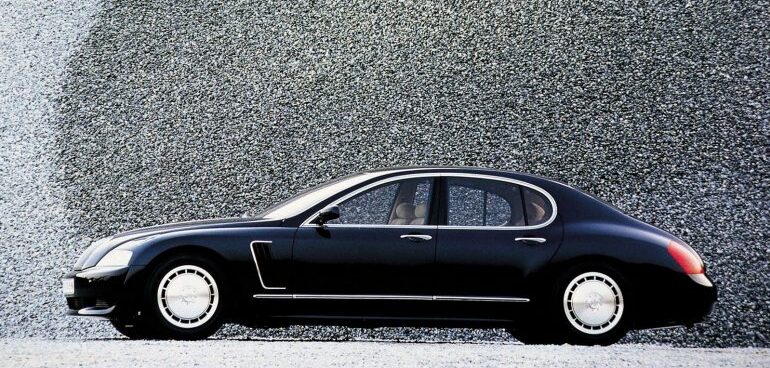
Though Bugatti didn’t produce the EB 218, its influence lingers. The idea of a practical yet opulent Bugatti sedan remains compelling. Maybe one day, Bugatti will revisit the concept, giving the Tourbillon a worthy showroom companion.


